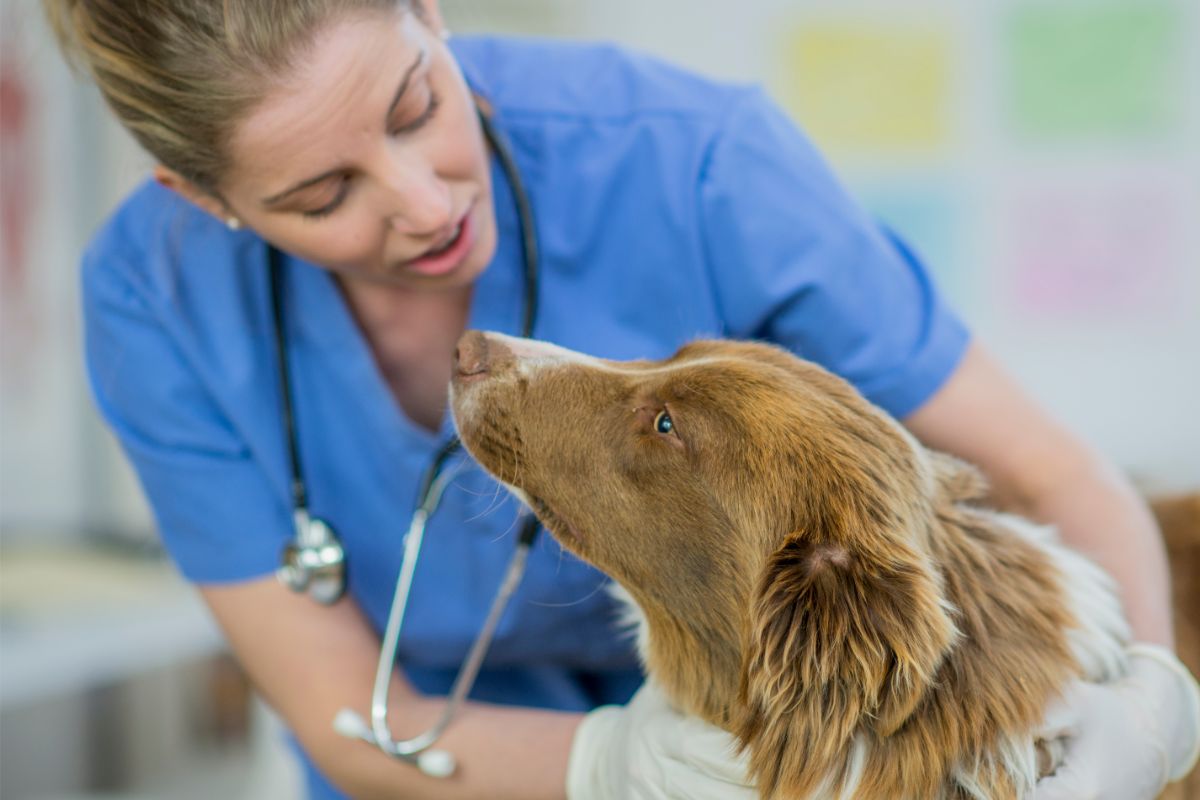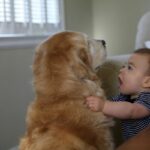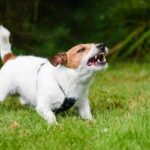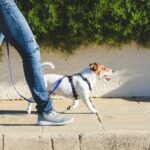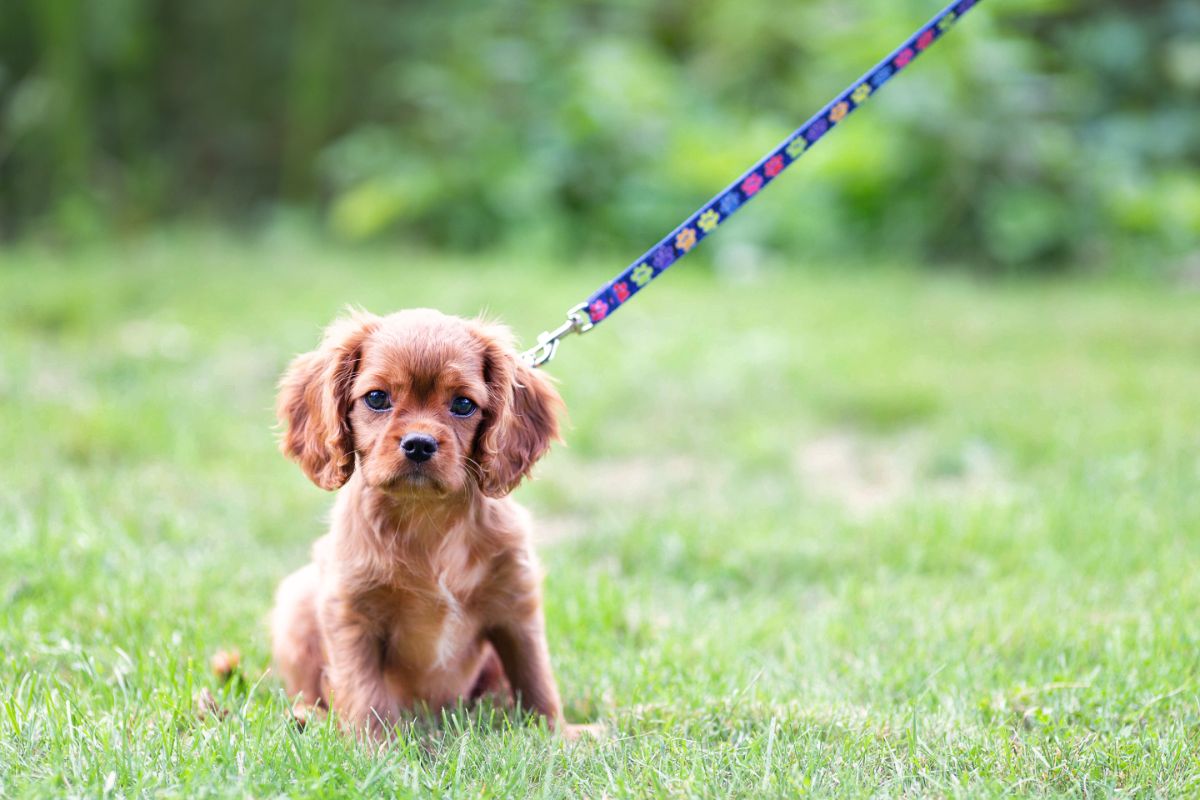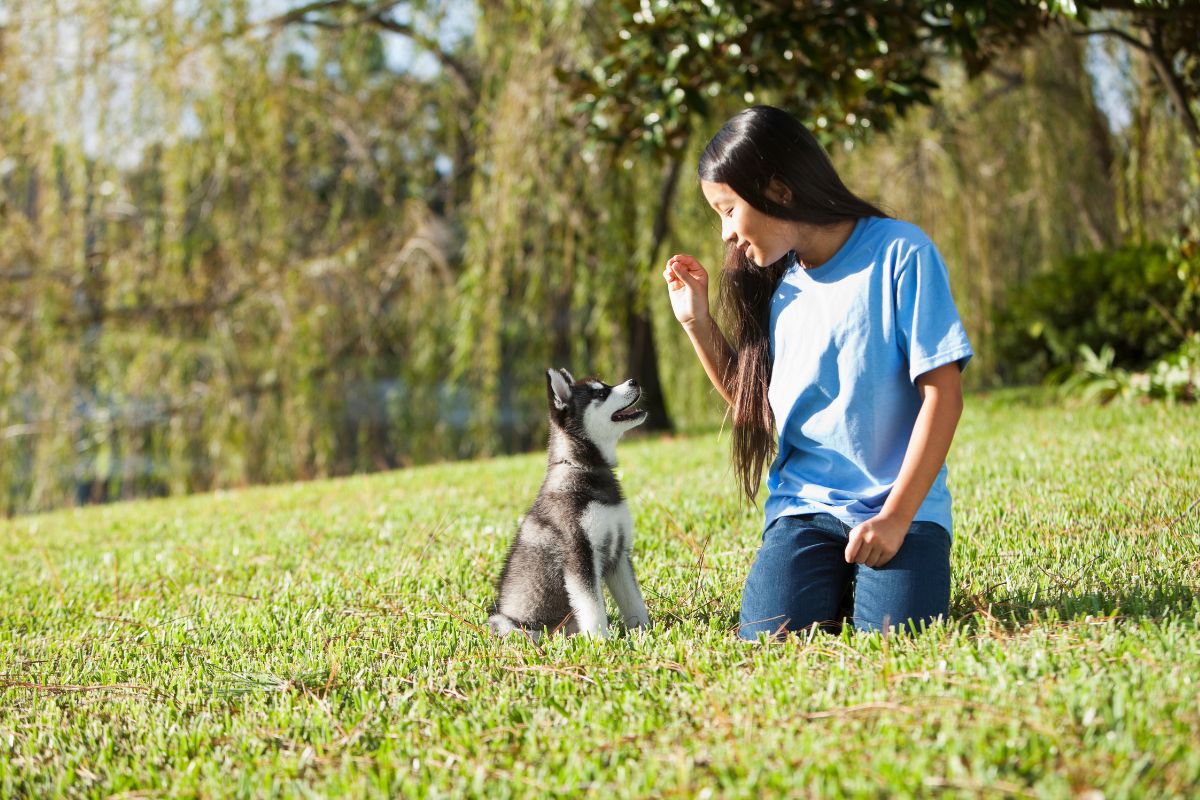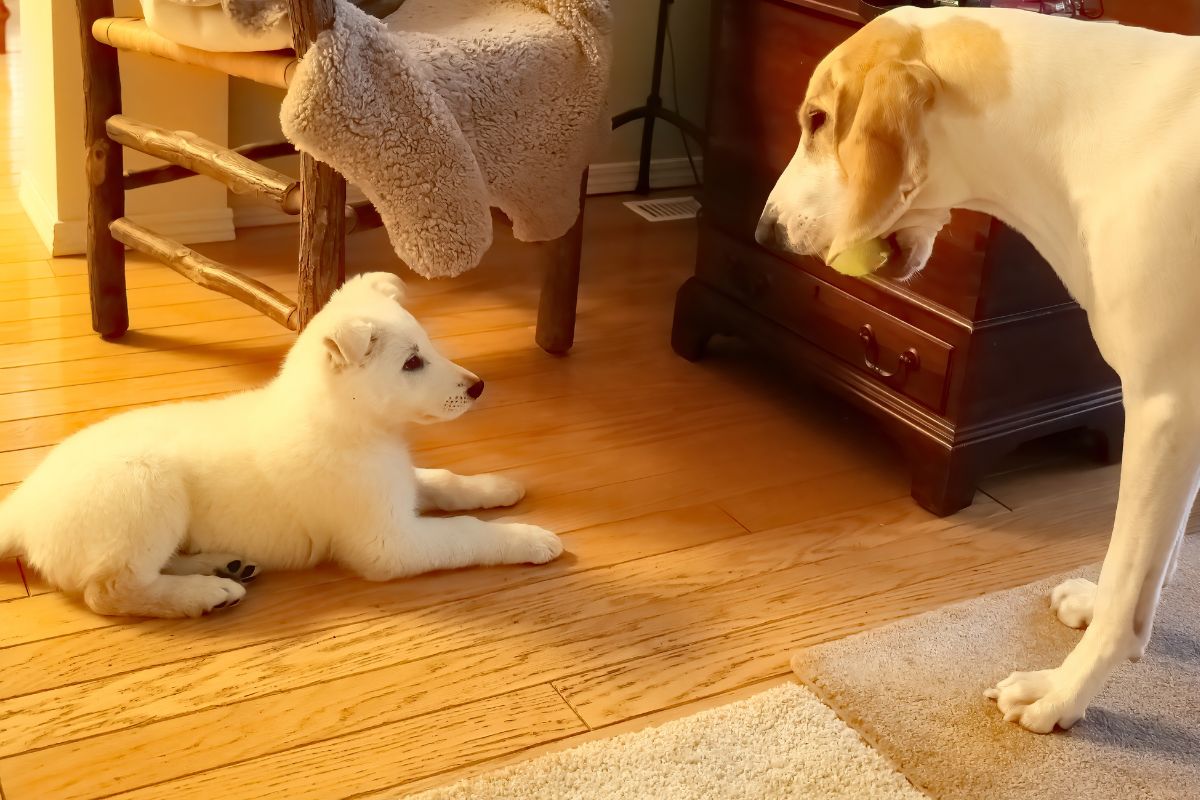Training your dog to be well-behaved not only at home but while out and about on a leash can take quite a bit of work.
Not only do you have to dedicate a lot of time to the task, but there are also numerous things that you need to do in order to ensure that the training is truly effective.
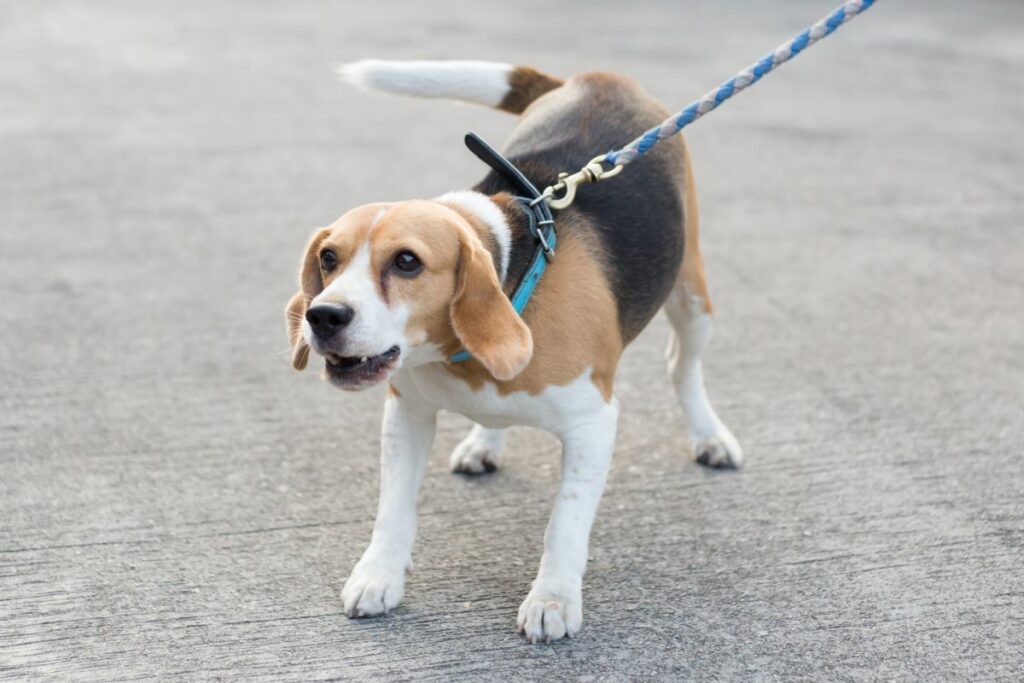
This can be made all the more difficult when you have a reactive dog that responds to all kinds of different stimuli while out and about, being sent into fits of barking.
Luckily, if you do have a particularly reactive dog, you are not alone, and we are here to help you to find out what it is that is causing your dog to be so reactive, and what you can do to help ease your dog’s anxieties.
Read on down below to get started!
What Causes Reactivity In Dogs
There are actually a number of things that can cause reactivity to manifest itself in a dog’s behavior. Let’s take a look at them:
Poor Socialization
Dogs should be socialized from a very young age, between 8 to 16 weeks, as this helps them get used to being in close contact with new people, and most crucially, new dogs.
If a dog is not socialized at a young age, it is far more likely to be anxious at the prospect of meeting new people and dogs, and for them to react to this anxiety with barking.
Frustration
When dogs are still very young, they may find themselves very frustrated by the restrictive nature of a lead or a harness.
Puppies and young dogs are excitable and they are keen to socialize and explore the world around them.
The leash acts as a barrier, preventing them from socializing, and this can cause them to bark with frustration.
Fear
One of the most common reasons why dogs can be very reactive, especially on a leash, is simply that they are experiencing high levels of fear, which causes them to react in an undesirable way.
Ordinarily, when a dog encounters a frightening experience, their ‘fight or flight’ response kicks in, allowing them the choice to stay and fight back the potential threat, or flee.
The presence of a leash prevents a dog from having the choice of ‘Flight’, meaning all that they have left is ‘Fight’, which manifests itself in lots of barking.
Poor Training
When it comes to dog training, ‘Aversives’ are very much frowned upon as a very scarring method of discipline.
Aversives are unpleasant consequences that are used to correct unwanted behavior, these tend to be things like shock collars, or harsh and unpleasant sounds.
Aversives can cause a dog to be far more reactive in the future, as they are worried about all kinds of external stimuli potentially resulting in punishment for them.
Health
If you suspect that your dog is being extra reactive, but you feel as though the other causes aren’t applicable to your dog’s case, then you will definitely want to contact your veterinarian in case your dog is proving more reactive as a result of health issues.
Sometimes, dogs can have a lot of trouble when it comes to communicating their health problems, so it’s our job to find out what’s going on.
How Is Reactivity Treated In Dogs?
Generally, the most effective way to help curb reactivity within dogs is to target the underlying cause of the reactivity and treat it. In order to do this, the most effective method is to make use of desensitization.
Desensitization involves presenting the dog with the trigger that induces fear, at a distance, and allowing the dog to recognize that it is not a threat.
When the dog is at a great enough distance, they are allowed a more objective view of it, which helps them desensitize themselves.
Once the dog begins to show fewer signs of reactivity to its specific stimuli, the next step is to help the dog to associate the negative stimuli with a positive reward. This is called counterconditioning.
In order to use counterconditioning to treat reactivity, the dog is presented with the fear-inducing stimuli, before then also being presented with a favorite treat.
This causes the dog to directly associate the negative stimuli with a positive reward, which will slowly cause a positive response to replace the negative response when presented with the stimuli!
The only trouble is, you need to closely manage your dog as you help to remedy its reactivity, to ensure that it does not go over its comfort threshold, at which point it will become incredibly reactive, and will likely not respond to positive stimuli like treats, until pulled far away from the negative stimulus.
You will need to use counterconditioning gradually, allowing your dog to get closer to the stimulus each time, as rushing the process will prove very counterproductive, and may actually make your dog more fearful.
What Does A ‘Threshold’ Refer To In Dog Training?
Put simply, the ‘Threshold’ within the context of reactive dog training is the mental line that a dog will draw between themselves and stressful stimuli. When a dog crosses its threshold, and moves past its comfort zone, closer to the stressful stimuli, it will begin reacting.
Though you cannot physically see a dog’s threshold, you can certainly get a sense of where it is by how a dog reacts upon crossing it, or even simply approaching it.
When you are out for a walk with your dog, and you suddenly see it displaying signs of stress, then it is very likely that you have crossed its imagined threshold, and it will currently be in a state of ‘Fight or flight’.
Part of the counterconditioning and desensitization process involves helping your dog to cross thresholds at its own pace, allowing it to get closer to triggers and negative stimuli, and to recognize that certain stimuli do not need to be feared.
It is important to ensure that you do not force your dog over a threshold, as this will overwhelm it.
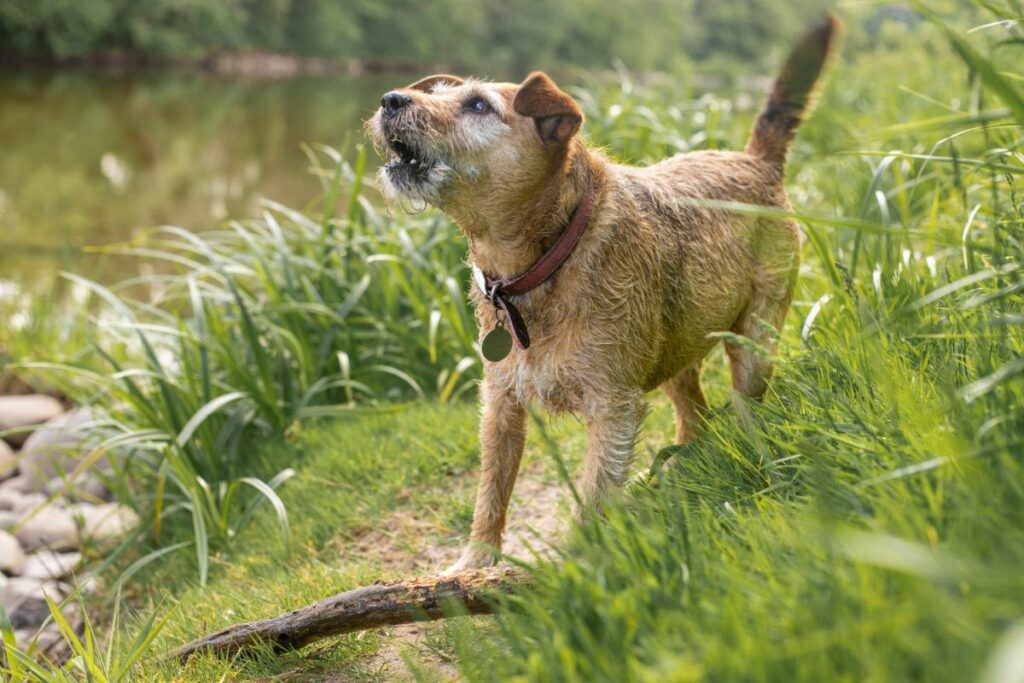
What Are The Signs That A Dog Is Stressed Or Fearful?
In order to recognize what stimuli are causing your dog to react, when it crosses its threshold, you will want to carefully observe your dog’s behavior for signs of fear and stress. These can actually take a number of forms.
Your dog may begin yawning excessively, while their body shakes completely. You may also notice your dog totally freezing in position, or backing away while tucking in its tail and licking its lips.
When you notice any number of these signs of stress, it is important to identify the stressful stimulus and move away from it, to keep your dog from becoming overwhelmed and stressed out.
How Do You Use Counterconditioning And Desensitization To Treat Reactivity In Your Dog?
The most crucial thing to keep in mind when training your dog to be less reactive is to take everything at your dog’s pace. Do not force your dog to train when they don’t want to, and don’t force them into stressful situations in order to desensitize them, as this is more likely to increase their anxiety.
Generally, the process of counterconditioning and desensitization can take place over a long period of time, with some training courses taking multiple months. It is important to be patient during the training process.
When you take your dog for a walk, you will begin to notice the stimuli that stress it out, and how close your dog can go before it exceeds its threshold.
Make sure not to exceed this threshold, while also remaining calm, so that your dog can see that the stimulus is not actually a threat. Over time, you will be able to move slightly closer.
Once your dog has begun to slowly desensitize, you will want to start using counterconditioning. The best way to do this is, as you walk, notice any time that your dog engages with its fear trigger.
As soon as you notice your dog engaging with the trigger, and displaying stress symptoms, click your fingers to get your dog’s attention. When your dog turns its attention back to you, reward it with a treat.
If you notice that your dog is unable to pull its attention away from its trigger, it is a sign that you are advancing over the threshold and that you should step back before continuing.
Over time, your dog will begin to recognize seeing its trigger as a positive experience, as it knows it will be rewarded with a treat.
It will also begin to understand that it can turn to you to offer stability in times of anxiety and stress. At this point, you will want to slightly alter the training to help the dog to reach a little further.
When out for a walk, and you notice your dog engaging with its trigger, allow your dog around 5 seconds to respond to the trigger.
At this point in the training process, your dog should begin turning their attention away from the stimulus, towards you, as they are expecting a treat.
As soon as your dog turns their attention back to you, click your finger, and feed your dog a treat. Again, if your dog does not disengage from the trigger, then pull back to a safer distance.
You will be able to repeat this training process while also allowing your dog to move closer and closer to their trigger at a time, as they get more comfortable.
Again, it is important that you do not force your dog to engage with the trigger if they do not wish to.
What Are The Zones Of A Dog’s Threshold?
In order to help train your dog to be less reactive, you will need to know what the various zones of the threshold are, and what role they play.
The Green Zone
The ‘Green Zone’ of the threshold is the innermost section, in which the dog feels most safe. It is a mental area that they feel that they have complete control over, and thus they are far more relaxed in this area.
When your dog is in the green zone, you should notice that it has a much more relaxed demeanor, its body and face will be relaxed, and it will be slightly more energetic.
Common green zones are the home and the backyard, as these are spaces that the dog knows intimately, and thus they can maintain control over these areas, which helps to keep them calm and relaxed.
Generally, the green zone is where much of the reactive dog training should first be carried out. Train your dog in replacement behaviors here to ward them away from negative behaviors.
The Yellow Zone
When your dog enters the yellow zone of their imagined threshold, you should notice that they begin showing slight signs of stress.
This means that they have left the comfort of the green zone, and they have likely noticed a potential trigger.
Signs of stress here will manifest in the form of a forward shift of weight, a closed mouth, and a stiff and upright tail.
The yellow zone is generally the area that you will be targeting towards the initial phases of the desensitization and counterconditioning process.
This is a zone where the dog will notice and begin responding to a potential trigger, but can also be communicated with. You will be able to return your dog’s attention to you, by providing them with a treat, or some encouragement.
The yellow zone is important because it is also known as the zone for learning. Though the dog will be dealing with slight stress, from noticing a trigger, they will still be communicative, and they will be receptive to learning new things.
Over time, as you desensitize your dog, and counter-condition them, its yellow zone will naturally reach further and further outward, taking over the red zone.
It is important not to take your dog into the red zone of the threshold during training, as it can be incredibly counterproductive.
The Red Zone
The ‘Red’ zone simply refers to any area that is beyond the dog’s own comfort threshold. When the dog is taken beyond the comfort of the green zone, and even beyond the yellow zone, their ‘fight or flight’ response will quickly kick in.
Because the dog can not easily use ‘flight’ when on a leash, they will very often turn to ‘Fight’, which results in erratic barking, and sometimes snarling, as well as other undesirable behaviors.
In the red zone, your dog cannot be reasoned with, and it will not be receptive to lessons, so the red zone should never be used for training purposes.
When your dog enters the red zone, you should notice extreme behaviors like barking and pulling against the leash.
Upon noticing that you have crossed into the red zone, you will want to very carefully exit this zone, and move away from the trigger. Find a space for your dog to relax and cool down for a little bit, before continuing to walk onwards.
If you find yourself accidentally slipping into the red zone, don’t worry. However, you will want to make sure that you are not purposefully dragging your dog into the red zone, as this will have a negative impact on the training of your dog. Your dog may actually become more fearful.
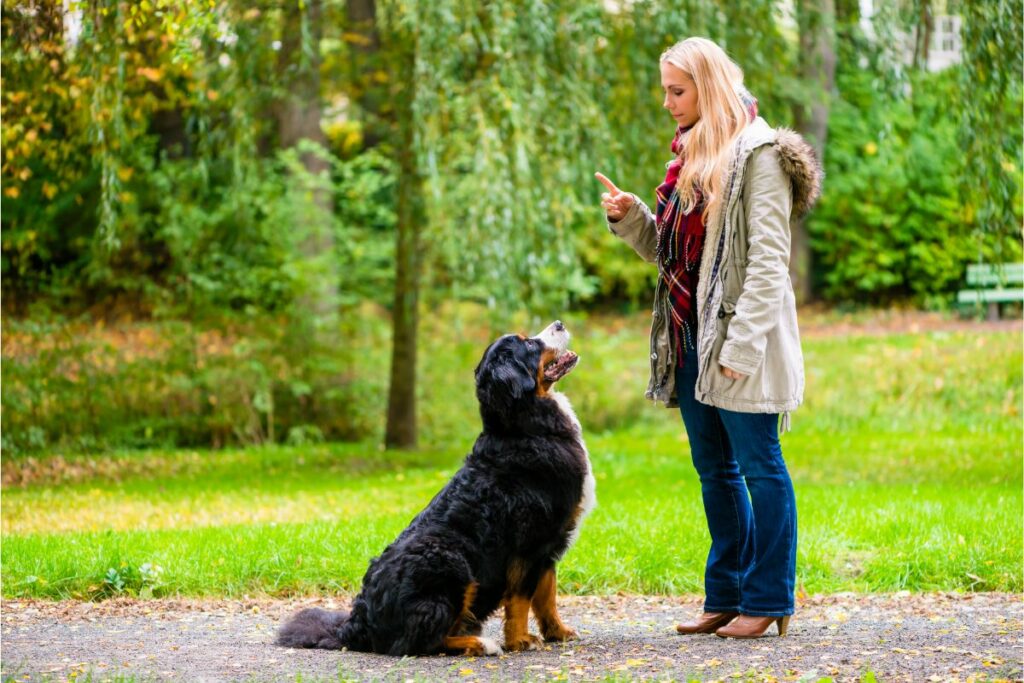
What Should Be Done When A Dog Goes Over Its Threshold?
Occasionally, during the training process, you might find yourself slipping over the threshold without realizing it. In this situation, it is best not to panic, as your dog will be depending on you to be a voice of reason for them.
The best thing to do when you notice your dog showing extreme stress symptoms from crossing the threshold is to return back to a safe area. If you know what it is that is triggering your dog, then you will want to disengage with it as soon as possible, without rushing your dog.
Move calmly as you guide your dog back to safety, as you will want to be a source of calm for your dog. When in the red zone, your dog’s amygdala will be fired up, which can cause them to act unreasonably, so you will need to slowly take control.
Once you have moved your dog away from the red zone, find an isolated spot, with few external stimuli, so you and your dog have some time to cool down and recollect yourselves.
Generally, you will want to make use of some visual barriers, such as trees, bushes, or fences to get between your dog and its trigger as this helps the dog to completely forget about it.
If you notice that you have gone over the threshold, make a mental note of how far away from the trigger you were upon your dog reacting, as this will help you to get a sense of the severity of the case, and then find a solution. It will also help you to avoid crossing the threshold in the future.
What Replacement Behaviors Work For A Reactive Dog?
One of the best ways to help your dog to curb reactive behaviors is to replace the negative behaviors with more positive ones.
Divert Attention
One of the best things that you can do for your dog when training them to be less reactive is to ensure that you have good control over their attention. When you notice your dog potentially growing stressed out, you will want to say something like ‘Look at me’, which will get them to make eye contact with you.
Eye contact with an owner can be very comforting to dogs, and it can help them to easily relax and regain their confidence.
It will also prevent them from thinking about their trigger, which will help you to easily move to a more comfortable spot.
U-Turns
You can also train your dog to perform a direct U-turn if they ever find themselves approaching a stressful situation.
Ordinarily, when dogs enter the red zone, they will either begin barking incessantly or freeze completely in place.
Teaching them to perform a U-turn helps them to recognize their own limits, and ensures that they will seek to pull themselves out of stressful situations.
To Wrap Up
There you have it! Though the prospect of training a reactive dog may seem like a daunting prospect, we hope that this guide has made it much simpler to handle the task.
The most important thing to remember throughout the process is that you should only ever move at your dog’s pace, and never force it into stressful situations, as this will only negatively impact any positive progress your training has achieved!
- How To Teach Your Puppy Their Name Easily! - July 18, 2023
- Is Your Puppy Counter Surfing? Find Out How To Stop It! - July 18, 2023
- How To Train Your Puppy For Car Rides: Everything You Need To Know - July 18, 2023


